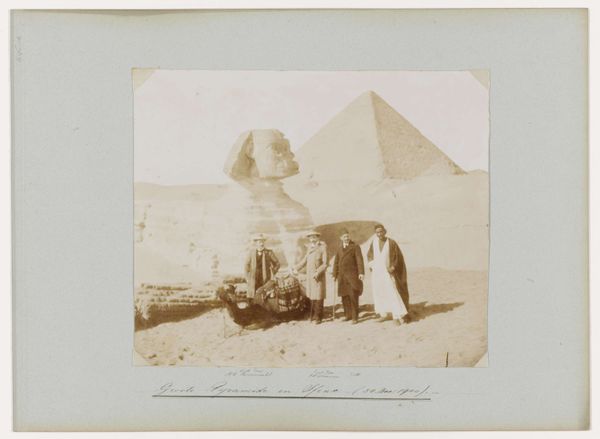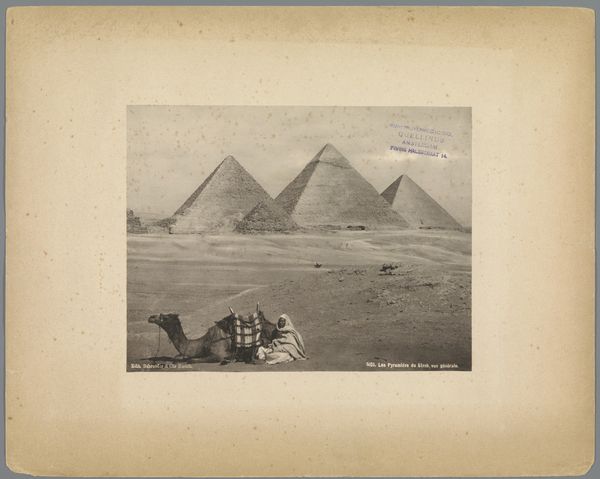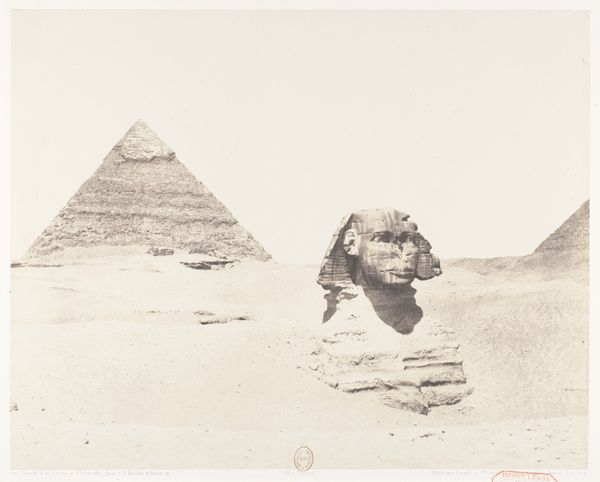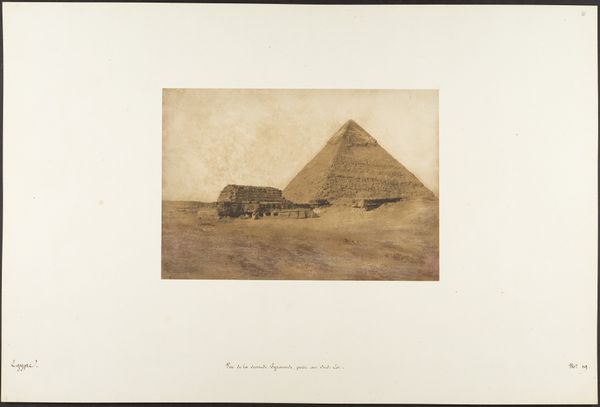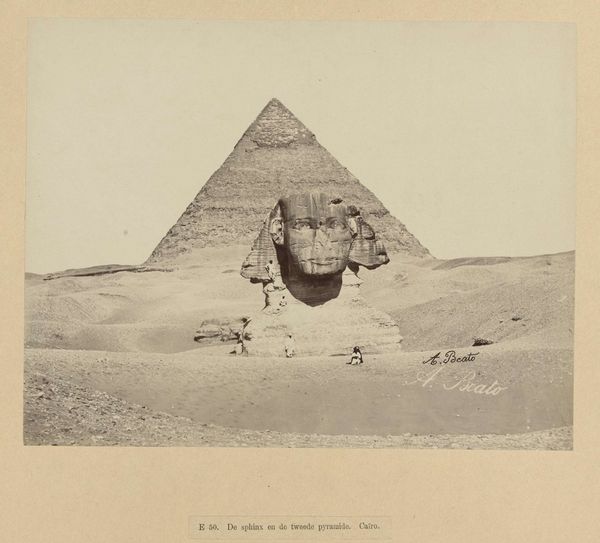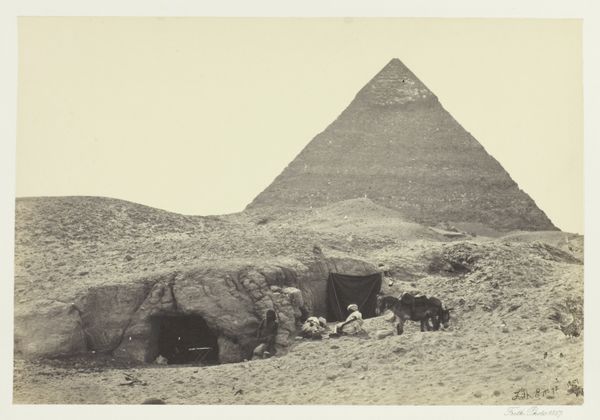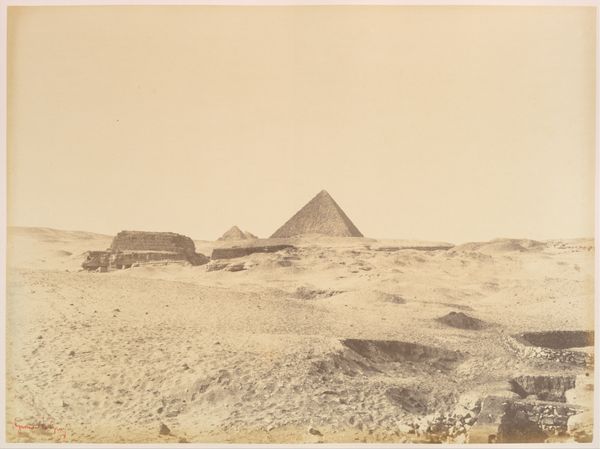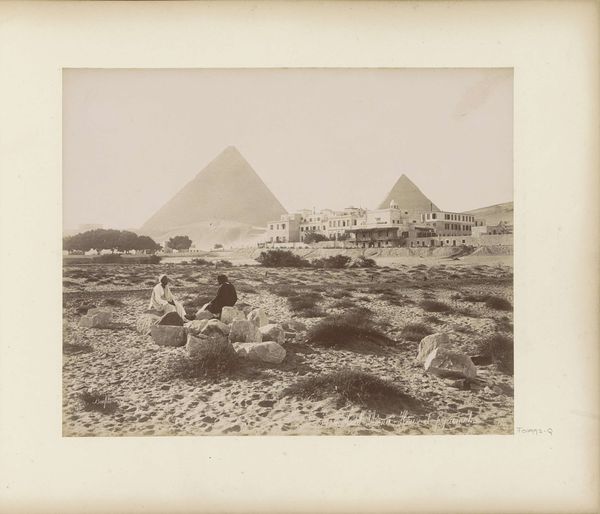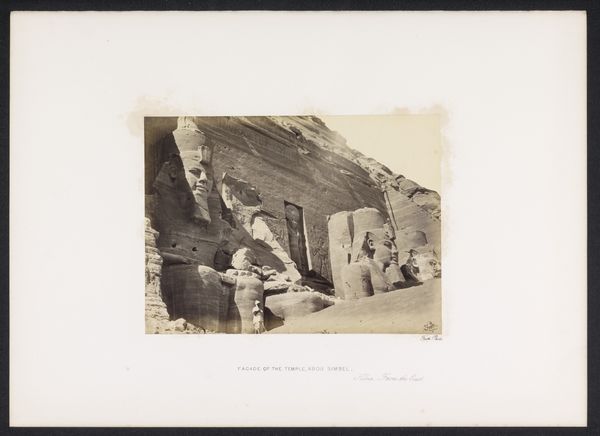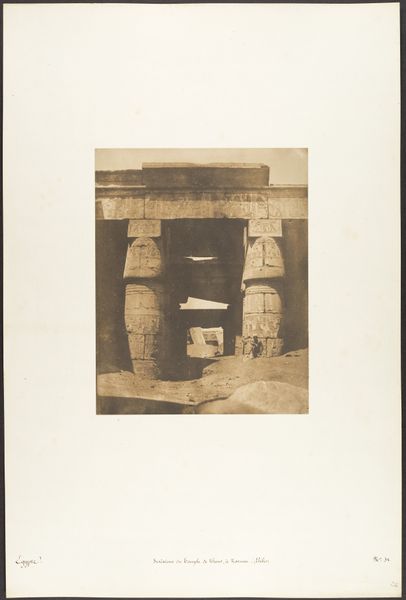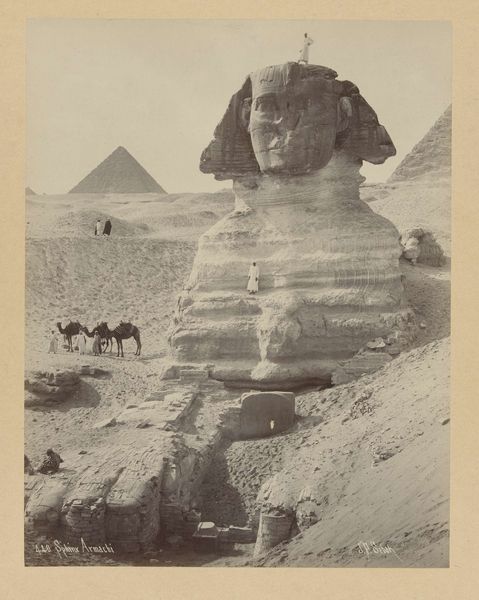
Vue du grand Sphinx et de la grande pyramide de Menkazeh (Mycerinus) 1849
0:00
0:00
photography, gelatin-silver-print
#
landscape
#
ancient-egyptian-art
#
photography
#
ancient-mediterranean
#
gelatin-silver-print
Dimensions: Image: 6 3/8 × 8 7/16 in. (16.2 × 21.4 cm) Mount: 12 5/16 × 18 11/16 in. (31.2 × 47.5 cm)
Copyright: Public Domain
Maxime Du Camp made this photograph of the Sphinx and the pyramid of Menkaure in Egypt using the calotype process. This was a moment when early photography took on the orient as its subject. How does the image create meaning? In the mid-19th century, European colonial powers were expanding their reach into Africa and Asia. Photography played a crucial role, offering a seemingly objective record of these newly encountered lands and cultures. It shaped European perceptions of the Middle East, often emphasizing the exotic, the ancient, and the timeless. This in turn reinforced the colonial narrative of European superiority, casting the West as modern and dynamic, and the East as static and in need of Western intervention. To understand this image better, one can consult travel literature, colonial archives, and early photography journals. By examining these resources, we can better understand how the image relates to the social and institutional contexts in which it was made.
Comments
No comments
Be the first to comment and join the conversation on the ultimate creative platform.
